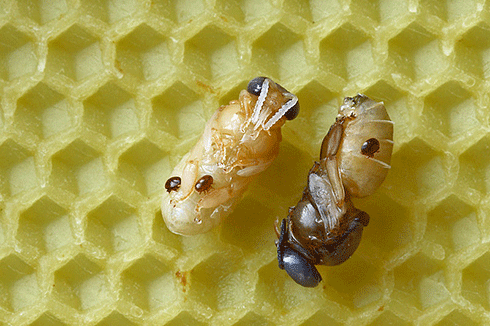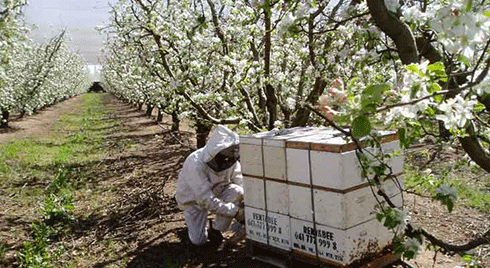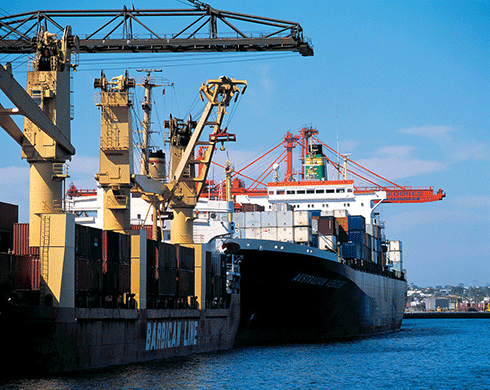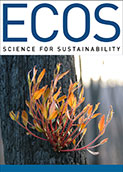
|
Published: 18 August 2014
On the waterfront: science, surveillance keep bee-killer at bay
How much do you think bees are worth to the Australian economy? You might be surprised – it's a considerable amount. No wonder then that quarantine authorities have turned to science to help protect our honey bees from invasive diseases.
Did you know that bees earn an estimated $4–$6 billion for Australia every year? Another way to look at it is – what price would you place on cashews, almonds, macadamias, strawberries and avocadoes? These are some of the crops that rely on bees for pollination.
In fact, around one in three bites of the food we eat owe its existence to bees, which is why it is a concern to learn that bee populations around the world are in trouble.
The Varroa mite (Varroa destructor) – which has been implicated in the collapse of bee colonies worldwide – is currently found in all beekeeping countries except Australia.
No country has been able to eradicate Varroa once it has become established. These sesame-seed-sized mites attach themselves to bees and suck their haemolymph (insects’ version of blood), making the bee more vulnerable to disease.
Adult worker bees infected with Varroa suddenly leave the hive, dying elsewhere. The colony then falls apart. Colony collapse has become a major problem – particularly in the US. While the underlying cause colony collapse is often unclear, many devastated hives have been found to contain Varroa mite.
It may only be a coincidence, but it’s another reason to keep Australia Varroa mite-free as for long as possible. Experts say that when – and it is when, not if – Varroa mite arrives in Australia, local bees will be extremely susceptible, as they have not been exposed to it.
There have already been a couple of scares. In 2012, Varroa-carrying bees were found living in the loading cranes of a ship berthed off Sydney.

|
|
Varroa destructor mites on bee pupae: the brown sesame-seed-sized mite has been linked to colony collapse disorder in countries where the pest has established. Credit: Waugsberg under CC BY-SA 3.0
|
Australia may be currently free of Varroa mite but not of its natural host, Asian honey bees – which is why horticultural industries, the honeybee industry and the Australian Government set up a National Bee Pest Surveillance Program managed nationally by Plant Health Australia.
No amount of surveillance can guarantee pests are kept out, however, so an early warning system is necessary.
The most likely entry point for Varroa mite is through Australia’s east coast ports, with New Zealand and South-East Asian vessels and their cargo presenting the highest risk.
The National Bee Pest Surveillance Program now has 126 ‘sentinel’ hives of healthy European honey bees placed at high-risk locations near ports, with an average of six per site. These hives are tested every two months for the presence of Varroa mites and another major honey bee pest, the Tropilaelaps mite.
CSIRO researchers used data-analysis expertise to work out the best sites for the hives. Using a technique called random effects modelling, which makes allowance for variance in the different types of data, the researchers began with the shipping data – which vessels had arrived in Australia, when they arrived and their port of origin.
They matched these records with exotic bee interceptions – whether on vessels, in machinery, or nesting on the outside of containers at ports. Then maps and aerial pictures of all Australian ports were assembled to produce models of potential bee habitats.
Mapping potential bee habitats is all well and good – but what is the real likelihood of bees finding these places? The researchers had to include information on how far bees can swarm, which turns out to be 5 km maximum for Asian honey bees and 2 km for European honey bees.
They also had to include information about how long a vessel would need to be in port for bees to find those ideal habitats. If there isn’t enough time for scout bees to find a suitable site or for a second set of bees to visit and ‘approve’ it, the colony will not swarm. That’s also assuming the swarm has a queen. This was not always possible to establish with confidence from the interception data.
Data were then assessed to establish what cargo came to the more ‘bee-hospitable’ ports, where the vessels arrived from and how long the voyage had been. Voyages of 300 days or longer were excluded on the basis that the bees wouldn’t survive a trip of that length. The country of origin and type of cargo are also important considerations. Asian honey bees in particular like to nest in nooks in machinery that is subsequently shipped as cargo.
All this information and scientific knowhow have combined to produce a cost-effective surveillance system that gives Australian authorities a good chance of heading off exotic and infected bees before they do any serious damage.
So, next time you’re enjoying a handful of almonds, spare a thought for the bees that pollinated it and for the data analysis that goes into keeping those bees healthy.

|
|
Bees ‘rented’ to an orchard for pollination services: billions of dollars worth of horticultural production annually depends in Australia having a healthy honey bee population. Credit: Pure Peninsula Honey
|
This is an edited version of a post first published on news@CSIRO blog




